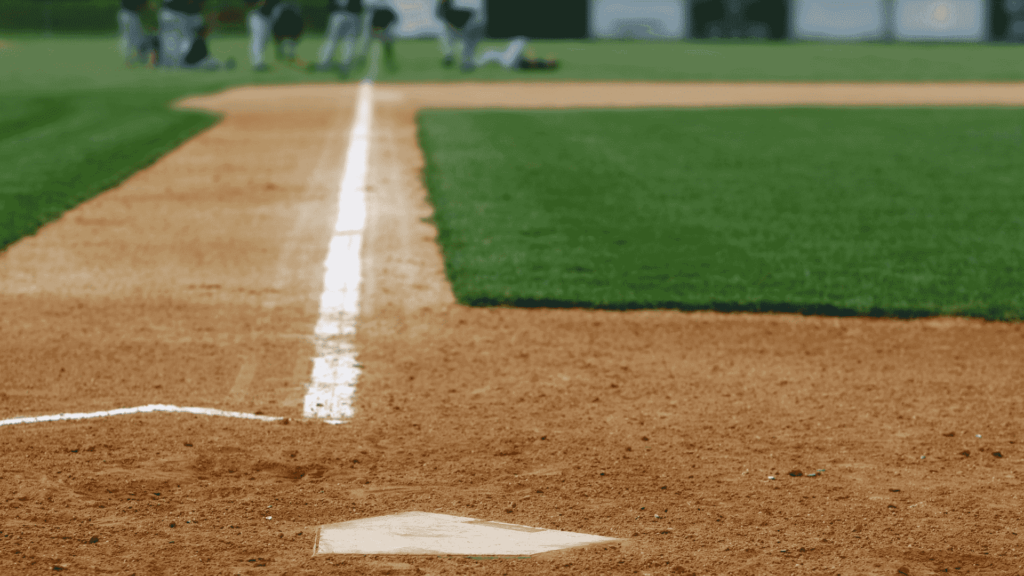- The history of baseball field measurements
- The different sections of a baseball field
- Calculating the total area of a baseball field | How Many Acres In A Baseball Field
- Converting the area to acres
- Variations in field dimensions for different levels of play
- Factors that can affect the size of a baseball field
- Terrain and Geographic Location
- Factors affecting climate and the environment
- Budget Constraints and Space Limitations
- Why acres are used to measure baseball fields
- The importance of maintaining the proper size of a baseball field
- Common misconceptions about the size of a baseball field
- Other measurements used in baseball fields
- Examples of famous baseball fields and their acreage
- Other sports fields and their sizes in comparison
- Practical applications of knowing the acreage of a baseball field
- Innovations in Field Design
- Technological Advancements
- Future Trends in Field Size
- conclusion
- FAQS
How Many Acres In A Baseball Field? The average size of baseball field can vary depending on the specific dimensions of the outfield and foul territory, as well as any additional features such as bullpens, dugouts, and seating areas. However, a standard baseball field dimensions are same as MLB field measurements that typically covers about 2 to 3 acres of land. Are all baseball fields the same size? the answer is no as they can vary somewhat in amateur or Little League play.
The history of baseball field measurements
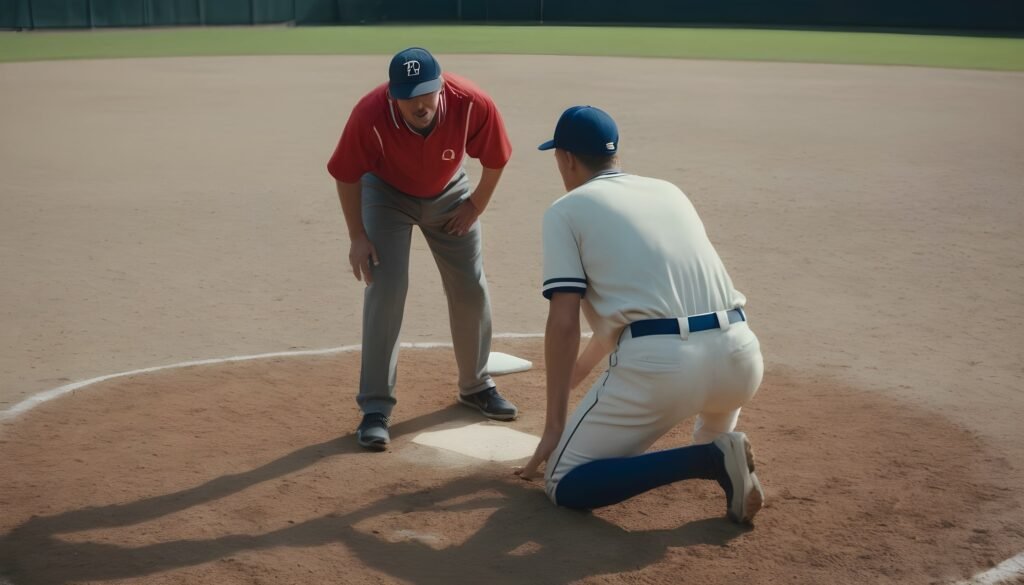
Throughout its history, baseball has seen numerous changes in field measurements, reflecting the sport’s growth and evolution. In the early years of baseball, field dimensions were not standardized, leading to significant variation for example, the distance between bases and the pitcher’s mound varied widely, sometimes even within the same league. n 1893, the National League adopted a standard distance of 90 feet between bases, a rule that remains unchanged to this day. The distance from the pitcher’s mound to home plate was gradually standardized to 60 feet, 6 inches (18.44 meters) during the late 19th and early 20th centuries. Today, professional baseball fields distance adhere to strict
standards set by organizations like Major League Baseball (MLB).
The different sections of a baseball field
To understand length of baseball field, Size of baseball field a standardized baseball field size, and baseball diamond size we must comprehend the section of baseball field. It includes the following
Infield : The infield is a square area with 90-foot sides, forming a diamond shape.
Outfield : he outfield is the grassy area beyond the infield diamond. It typically has no fixed dimensions, but the distance from home plate to the outfield fence varies from ballpark to ballpark
Foul Lines : Two foul lines extend from home plate through first and third base to the outfield fence. These lines extend indefinitely.
Calculating the total area of a baseball field | How Many Acres In A Baseball Field

So to comprehend that how many feet in a baseball field or how big is a baseball diamond we need to do some math to calculate baseball field measurements in feet. Baseball field measurements involves adding up the area of each section.
- The infield is typically a square with sides of 90 feet each. To find the area, you would square this dimension this give us measurements of a baseball diamond : 90 ft×90 ft=8100 ft2.
- The outfield’s dimensions can vary widely from ballpark to ballpark. Let’s assume a hypothetical outfield area of 350×350 feet. To find the area, you would multiply the length by the width: 350 ft×350 ft=122,500 ft2.
- Foul territory is the area outside the foul lines. Again, this can vary, but let’s say it’s approximately the same as the infield area for simplicity. So, 8100 ft2
So combining the three we can calculate square footage of a baseball field i.e.
Total area = Infield area + Outfield area + Foul territory area
Total area = 139,700 ft2
So measurement baseball field dimensions or measurements of a baseball field is 139,700 Square feet. This give us the answers to the most common questions that are, what is the size of a baseball field or what are the measurements of a baseball field or what size is a baseball field or how many feet is a baseball field. However when it come to questions like how many acres is a baseball stadium or how many acres is a baseball field or how many acres for a baseball field and what is baseball field acreage. We need to convert the baseball base measurements to acres.
MUST READ:
- HOW MANY PLAYERS ARE ON THE BASEBALL FIELD
- WHY DOES CHICAGO HAVE TWO BASEBALL TEAMS
- How fast can an average person throw a baseball
- WHAT DOES SU MEAN IN BASEBALL
Converting the area to acres
To convert the total area of the baseball field from square feet to acres, you can use the conversion factor that 1 acre is equal to 43,560 square feet
So, Total area in acres / 43,560 = 139700/ 43,560 = 3.207 acres,
thus, baseball field acreage is 3.207
Now we have the answer to the question how big is a baseball field in acres
Variations in field dimensions for different levels of play
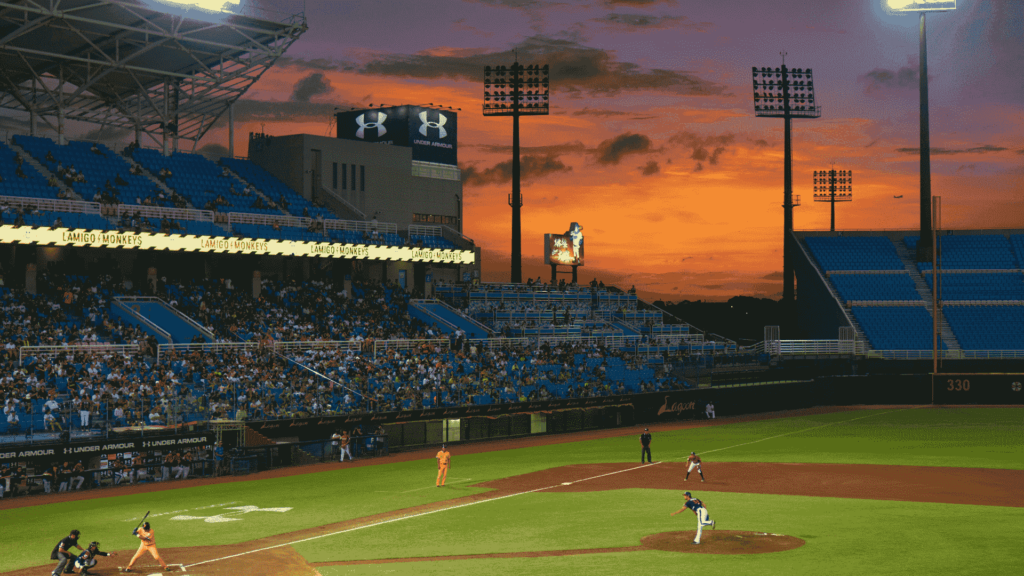
As Size of baseball field is standardized for major league, Then the question arises that why are baseball fields different sizes. This is because there are different levels of play in baseball, reflecting different the age, skill level, and resources available to the players and organizations. For example In youth leagues, such as Little League, field dimensions are typically smaller to accommodate the physical capabilities of younger players. Moreover, international competitions and amateur tournaments, field dimensions may vary based on the regulations of the organizing body.
When it comes down to designing and laying out a baseball pitch, there are several things that come into play. These elements all contribute to the distinctive characteristics of each baseball park and its overall gameplay.
Factors that can affect the size of a baseball field
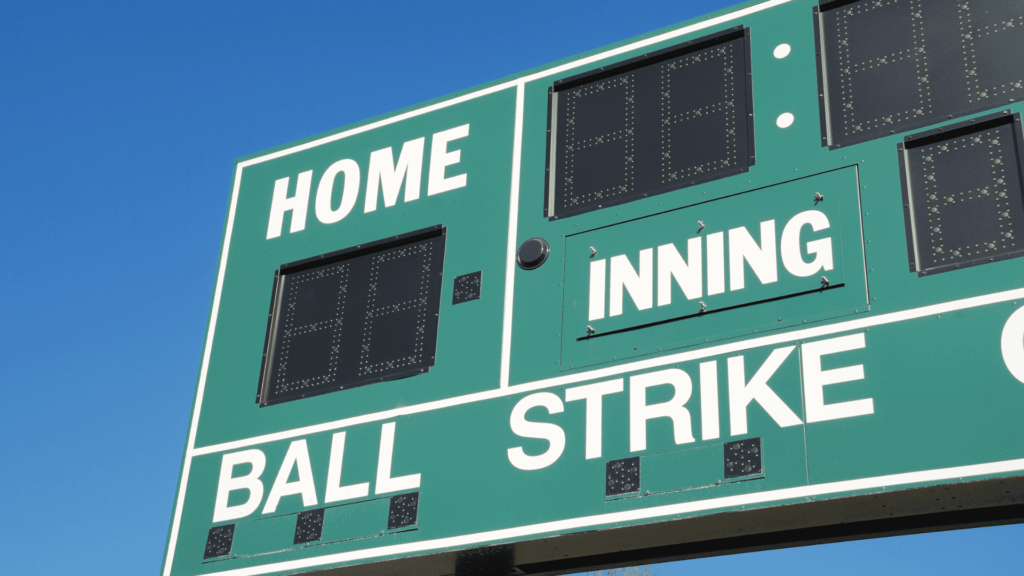
Factors may varies depending on the available space, Local regulations, Budget Resources, Topography and Terrain, Climate and weather conditions and architectural and aesthetic conditions.
Regulations and Rules
There are regulations which dictate the dimensions of a basic baseball field. In Major League Baseball, for example, the distance between bases is 90 feet and from the pitcher’s mound up to the home plate, 60 feet 6 inches (Reference). This ensures that all MLB stadiums are on the same playing field.
Terrain and Geographic Location
The geographic location and terrain can have a significant impact on the size of the baseball field. A stadium on hilly land may need a field that is different from one on flat ground. Stadiums in high-altitude areas, such as Coors Field, Denver, have bigger outfields because the thin air allows balls to move farther (Reference).
Factors affecting climate and the environment
Climate and Environmental Factors are next in line. The altitude, humidity, and wind direction can affect the distance a ball will travel. This can have an impact on the decision about how long the grass is in the outfield and the heights of the walls.
Budget Constraints and Space Limitations
Budget and Space Constraints may also have an impact on the design of baseball fields. The teams with the larger budgets are able to afford more elaborate and expansive stadiums. Teams located in cities may have space restrictions, which can lead to unusual features such as Fenway Park’s ‘Green Monster,’ a 37-foot-high left-field wall (Reference).
While there are rules that govern the dimensions of the baseball field in general, other factors also contribute to its final size and design.
Why acres are used to measure baseball fields
Acres are commonly used to measure area of a baseball fields because they provide a convenient unit of measurement for large areas of land, such as sports fields and stadiums. Moreover, The use of acres to measure land dates back centuries and is deeply ingrained in various cultures around the world. Using acres as the standard unit of measurement for baseball fields, it promotes consistency and standardization in reporting and describing the size of these fields.
The importance of maintaining the proper size of a baseball field
Maintaining the proper size of a baseball base measurement is essential as it ensures fairness and integrity of the game, safety of players, quality of competition and most importantly compliance of regulations.
Common misconceptions about the size of a baseball field
The regulation size baseball field is quite clear, but there are some misconceptions that includes
- Baseball field size are of same size : they are not actually as discussed above.
- Outfield distances are uniform across all ballparks : In professional baseball, outfield fence distances can vary significantly from one ballpark to another.
- Foul Territory Size is consistent across ballpark : The amount of foul territory in a baseball stadium can vary widely. Some stadiums have minimal foul territory, while others have a significant amount.
- Pitcher’s Mound Height is the same everywhere : While the distance from the pitcher’s mound to home plate is standardized at 60 feet, 6 inches in professional baseball, the height of the pitcher’s mound can vary slightly from one ballpark to another
- Base path distance are always 90 feet : The standard distance between bases is 90 feet in professional baseball, this distance can vary in youth leagues and recreational leagues.
MUST READ:
- how many stitches are on a mlb baseball
- What Is a No-No in Baseball: Exploring the Rare Feat
- What is a Fancy Place to Catch a Baseball Game?
- What Does MRP Mean in Baseball
Other measurements used in baseball fields
In addition to the standard measurements like base path distances, outfield fence distances, and pitcher’s mound height, there are other measurements used in baseball fields that contribute to the overall playing experience and safety of players. Those measurement includes
- Warning Track : The warning track is a track of dirt or gravel that extends around the perimeter of the outfield, typically about 10 to 15 feet wide
- Dugout Dimensions : Dugouts are the enclosed areas where teams sit when they are not on the field. The dimensions of dugouts can vary from one ballpark to another, but they typically include seating, storage space for equipment, and facilities for players and coaches.
- Backstop Distance : The backstop is the wall or screen located behind home plate to protect spectators from foul balls and wild pitches. The distance from home plate to the backstop can vary, but it is typically between 50 and 60 feet
Examples of famous baseball fields and their acreage
Baseball field acreage of some of the famous baseball fields are different.
- Fenway Park : Boston, Massachusetts, USA – 3.09 acres
- Wrigley Field: Chicago, Illinois, USA -2.98 acres
- Yankee Stadium : Bronx, New York, USA – 4.85 acres
- Dodger Stadium : Los Angeles, California, USA – 3.78 acres
- AT&T Park : San Francisco, California, USA – 4.00 acres
- Coors Field : Denver, Colorado, USA – 4.33 acres
Other sports fields and their sizes in comparison
Compare to baseball field area of 2- 4 acres other sports field area are as follow
- Football : 1.76-3.04 acres
- American Football : 1.32 acres
- Rugby : 1.49-2.63 acres
- Tennis : 0.05-0.06 acres
- Golf : 100-200 acres
- Hockey : 0.39 acres
Practical applications of knowing the acreage of a baseball field
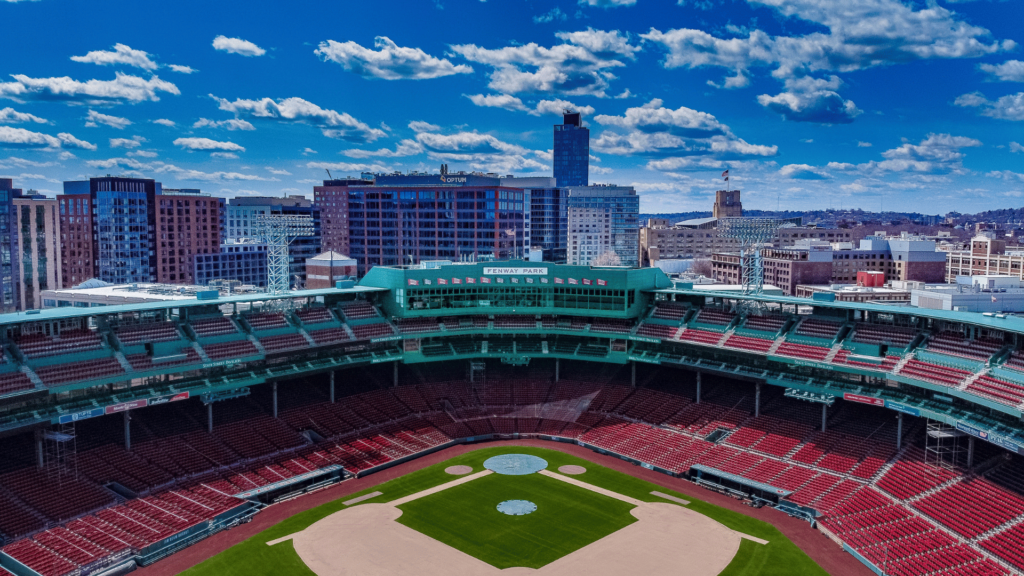
Knowing the acreage of a baseball field is essential for effective planning, maintenance, event planning, landscaping and decision-making across a range of activities and initiatives related to sports, recreation, and community development.
Innovations in Field Design
In the modern era there have been several innovations in baseball field design aimed at improving player performance, fan experience, and sustainability. These includes Hybrid turf, Subsurface heating and cooling, LED field lighting, smart irrigation systems and advance drainage systems. These innovations enhance the sustainability, performance, and versatility of baseball fields, creating better experiences for players, fans, and communities alike.
Technological Advancements
Technological advancements demonstrate the ongoing commitment to enhancing player experience and safety in baseball through innovation, research, and collaboration between industry stakeholders. By leveraging cutting-edge technologies, baseball can continue to evolve as a safer, more engaging, and more accessible sport for players of all ages and skill levels.
Future Trends in Field Size
Future trends in field size for baseball are likely to be dynamic and multifaceted, likely to be influenced by a combination of factors, including advances in technology, changes in player demographics and preferences, and evolving regulations and standards.
- Stadium Downsizing: Over the last two decades, baseball venues have shrunk. The teams are moving towards smaller stadiums in order to give fans a better experience, maximize revenue from dining and shopping options, and provide a luxury suite. The trend will likely continue as teams try to find a way to balance providing a great fan experience with maintaining the essence of football.
- Gameplay Impact: A smaller field can lead to more homeruns, changing team strategies as well as the balance of pitching and hitting. This could lead to higher scoring games and more excitement for the fans. However, this may reduce the importance of fielding skills, defensive strategies, or even team strategy.
- Bigger Bases: To improve safety for players and to encourage base thefts, the MLB introduced bigger bases. The change will influence the team’s strategies by putting a higher emphasis on agility and speed. It could also become standard in field design.
- Technological Progress: With the advancement of technology, it is expected that baseball fields will be designed with more emphasis on this aspect. It could be smart turf management system that improves field conditions or improved lighting and sound systems to enhance fan experience.
- Flexibility in Youth Leagues: Field sizes in youth leagues vary with age group and league rules. The flexibility of these fields allows them to better develop the players’ skills and enjoy playing baseball. This is likely be more widely adopted.
The future of baseball fields will be dynamic. It will balance tradition and innovation, safety for players with excitement during games, as well as commercial concerns with engagement from fans. These trends will shape baseball’s future in exciting new ways as they unfold.
References:
- Sports Travel Magazine – The Incredible Shrinking Venues ↩
- Spectrum Local News – Plans abounding for new sports stadiums across the U.S. ↩
- AP News – MLB rule changes: pitch clock, larger bases and more ↩
- Pro Baseball Insider – Youth Baseball Field Size by Age & League ↩
conclusion
The acreage of a baseball field is not merely a numerical statistic but a reflection of the rich history, cultural significance, and intricate design of these iconic sporting venues. From the hallowed grounds of Fenway Park to the majestic expanse of Yankee Stadium, baseball fields have served as the battlegrounds where legends are made, dreams are realized, and communities unite in the shared love of baseball. As we look to the future, the acreage of baseball fields will continue to evolve in response to changing trends, technologies, and societal values. Yet, amidst the shifting landscape of sports and entertainment, the timeless allure of the baseball field remains steadfast, reminding us of the enduring magic and timeless beauty of America’s favorite pastime.
MUST READ:
- What Hide Was First Used to Cover Baseballs in 1975?
- What is Kip Leather: A Comprehensive Guide
- what your baseball position says about you?
FAQS
What is the standard size of a Major League Baseball field?
A Major League Baseball (MLB) field, often referred to as a ballpark or diamond, is typically about 2.5 acres in size. However, this can vary considerably depending on the specific design of each stadium. The infield, defined by the bases and pitcher’s mound, is a standardized size across all MLB fields. However, the outfield dimensions can vary significantly from park to park.
Why do baseball field sizes vary?
While the infield dimensions of an MLB field are standardized, the outfield dimensions are not. This allows for unique characteristics that can be influenced by factors such as the stadium’s location, terrain, climate, and design preferences. These variations add an element of uniqueness to each park and can impact gameplay strategies and outcomes.
How does the size of a baseball field affect the game?
The size and layout of a baseball field can significantly impact the game. For instance, a larger outfield might favor pitchers by making it more difficult for batters to hit home runs, while a smaller outfield could favor batters. Similarly, the height and distance of outfield walls can influence game strategies and outcomes.
Are there trends in changing baseball field sizes?
Yes, recent trends include downsizing stadiums to provide a more intimate fan experience, introducing larger bases for player safety, and using technology to optimize field conditions. The balance between tradition and innovation continues to shape the evolution of baseball field design.

I’m Bruce Brandon, and I’ve spent over a decade immersing myself in the dynamic world of sports blogging. Fuelled by a passion for athletics since my early years, I’ve transformed my love for sports into a fulfilling career that has left a lasting impact on digital sports communities.
Throughout my career, I’ve covered an extensive array of sports. My versatility and breadth of knowledge have garnered recognition within the blogging community, establishing me as a respected voice in sports journalism.
I believe in the importance of accuracy, objectivity, and ethical conduct, and strive to uphold these principles in every piece of content I produce.
As I continue to leave my mark on the world of sports blogging, I hope to inspire others with my passion, expertise, and dedication to excellence. With each article I write and each insight I share, I aim to contribute positively to the discourse surrounding sports in the digital age.
